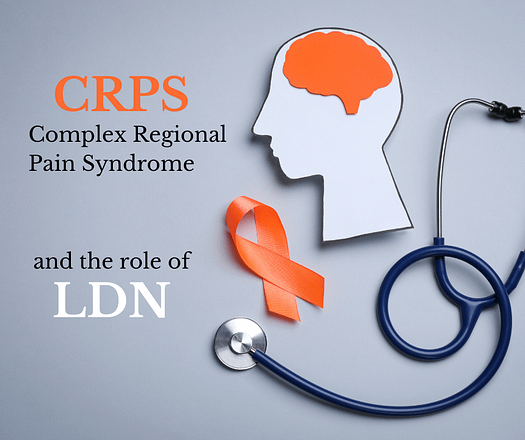Texas LDN Doctor
Understanding Chronic Regional Pain Syndrome (CRPS) and the Role of LDN
Updated October 24, 2025 by Louis Esquivel, MD
Chronic Regional Pain Syndrome (CRPS) is a condition that affects many individuals, causing significant distress and pain. In this blog post, we will delve into the mechanisms behind CRPS, the role of microglia in this condition, and how Low-Dose Naltrexone (LDN) can help alleviate symptoms. This discussion is based on insights from a recent video discussion with CRPS patients.

What is Chronic Regional Pain Syndrome (CRPS)?
CRPS is a chronic pain condition that typically affects a limb after an injury.
The pain experienced by CRPS patients is often disproportionate to the severity of the initial injury. This condition is characterized by prolonged or excessive pain and changes in skin color, temperature, and/or swelling in the affected area.
The Role of Microglia and Central Sensitization in CRPS
Microglia are a type of glial cell located in the central nervous system (CNS) that act as the primary immune defense in the brain and spinal cord. In CRPS patients, microglia become highly activated, leading to a state known as central sensitization. This heightened state of activation lowers the threshold for nerve activation within the brain, making the CNS more sensitive to stimuli.
This central sensitization means that any incoming response is perceived as pain, even if it is a non-painful stimulus. For example, a simple touch can feel like a punch or worse. This abnormal sensitivity is a hallmark of chronic regional pain sensitization.
How Does Low-Dose Naltrexone (LDN) Help CRPS Patients?
LDN works on the Toll-Like Receptor 4 (TLR4) system, which plays a crucial role in the body's immune response.
By downregulating the activation of microglia and the inflammatory components within the CNS, LDN helps reduce the hypersensitization seen in CRPS patients.
As a result, the perception of incoming stimuli is lessened, and the exaggerated pain response is diminished. Over time, patients experience a shift from intense pain to a more manageable sensation. This process can take a minimum of three months, often extending to six months or even two years for some patients.
Case Study: The Impact of LDN on CRPS Patients
One notable example of LDN's effectiveness is seen in CRPS patients who often start treatment on high-dose opioids.
The process involves titrating LDN up to 1 mg and maintaining this dosage for at least three months. During this period, patients' pain management medications are gradually reduced.
This approach allows for an increase in the Naltrexone dosage while tapering off pain management narcotics. The result is a significant reduction in pain and an overall improvement in the quality of life for these patients. The transformation is often described as life-changing, with patients moving from debilitating pain to a more functional and fulfilling life.
Conclusion
Chronic Regional Pain Syndrome is a complex condition that requires a multifaceted approach for effective management. The role of microglia and central sensitization in CRPS highlights the importance of targeting these mechanisms to alleviate pain. Low-Dose Naltrexone offers a promising solution by downregulating microglial activation and reducing hypersensitization. For many CRPS patients, LDN has proven to be a game-changer, significantly improving their quality of life.
If you or someone you know is struggling with CRPS, consider discussing LDN with a healthcare professional to explore its potential benefits.
The journey to pain relief and a better quality of life is possible with the right treatment approach.
Next Step
I offer a free, no obligation opinion. Also, if you are ready to get started, click the appointment link at the top of this page to be taken to my telemedicine platform where you can register and request your consultation. I look forward to hearing from you!
Get a free, no obligation Mini-Assessment
Not sure if you would be a good candidate for a trial of low dose naltrexone (LDN) ? Complete our free Mini-Assessment/Opinion and find out now!
Texas LDN Doctor
Services
LDN Prescription
LDN Doctor
LDN Telemedicine
© Copyright Texas LDN Doctor/Louis Esquivel MD PA. All Rights Reserved.